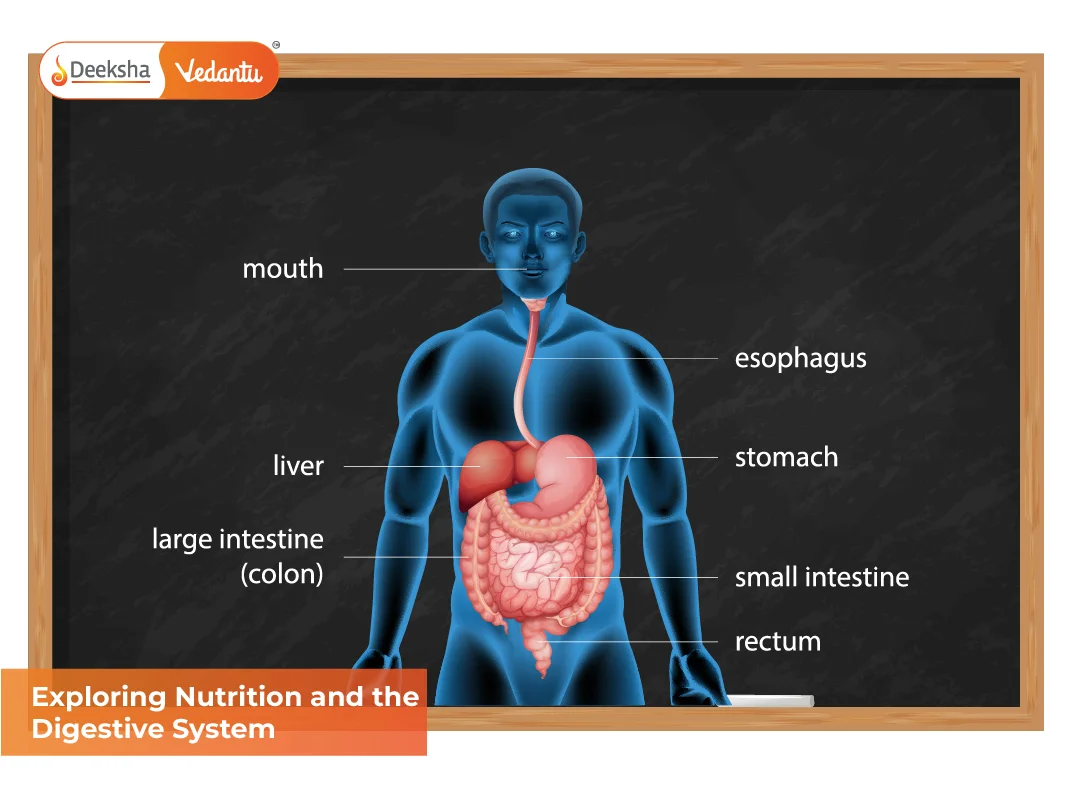Nutrition is the cornerstone of human health, influencing everything from growth and immunity to energy and mental function. The human digestive system plays a vital role in breaking down food and extracting essential nutrients. In this blog, we will explore nutrition in humans, the functions of digestive organs, types of nutrients, and how enzymes facilitate this essential life process.
What is Nutrition?
Nutrition refers to the process by which living organisms obtain and utilize food for energy, growth, and repair. In humans, it involves the intake, digestion, absorption, and assimilation of nutrients. This process ensures the body gets the fuel it needs to function effectively.
Learn more: What is Nutrition?
Why is Nutrition Important?
- Provides energy for daily activities
- Supports physical and mental growth
- Enhances immunity and disease resistance
- Repairs and maintains body tissues
- Ensures proper function of organs and systems
A lack of proper nutrition can result in fatigue, stunted growth, impaired immunity, and various lifestyle diseases. Nutrition isn’t just about eating; it’s about eating right.
Types of Nutrients
Nutrients are classified into two major categories: macronutrients and micronutrients.
Macronutrients
These are required in large amounts and include:
- Carbohydrates: Main source of energy. Found in rice, bread, fruits, etc.
- Proteins: Required for building and repairing body tissues. Found in pulses, dairy, meat, etc.
- Fats: Energy reserves; support cell function and hormone production. Found in oils, butter, nuts.
- Water: Vital for digestion, temperature regulation, and nutrient transport.
Micronutrients
Needed in smaller quantities but crucial for development and disease prevention:
- Vitamins: Such as Vitamin A, B-complex, C, D, E, and K, each with unique functions
- Minerals: Like calcium, iron, iodine, magnesium, zinc, etc.
A balanced intake of both macro and micronutrients supports optimal bodily function.
Nutrition in Humans
Human beings are heterotrophic, which means we rely on other organisms for food. Our mode of nutrition is holozoic, involving five main steps:
Explore more: Life Processes | What are Life Processes?
Steps of Human Nutrition
- Ingestion: The act of eating and drinking
- Digestion: Mechanical and chemical breakdown of food into simpler nutrients
- Absorption: Nutrients pass into blood or lymph
- Assimilation: Nutrients are utilized by body tissues
- Egestion: Expulsion of undigested waste as feces
Each step plays a critical role in maintaining health and energy balance.
The Human Digestive System
The digestive system consists of the alimentary canal and associated glands. It breaks down complex food substances into absorbable forms through both mechanical and enzymatic actions.
Explore: Human Digestive System
Alimentary Canal Components
| Organ | Description & Function |
| Mouth | Mechanical digestion via teeth, enzymatic digestion via saliva |
| Esophagus | Muscular tube that pushes food to stomach using peristalsis |
| Stomach | Mixes food with gastric juice containing pepsin and HCl |
| Small Intestine | Site of most digestion and nutrient absorption |
| Large Intestine | Absorbs water, forms and expels feces |
| Rectum & Anus | Store and expel waste |
Accessory Organs
| Organ | Function |
| Liver | Produces bile to break down fats |
| Gallbladder | Stores and releases bile into the small intestine |
| Pancreas | Produces digestive enzymes and insulin |
These organs aid digestion even though food does not directly pass through them.
Functions of Digestive Organs
Mouth
- Teeth grind the food
- Salivary glands secrete saliva
- Salivary amylase begins carbohydrate digestion
Esophagus
- A muscular tube
- Pushes food to the stomach using rhythmic contractions called peristalsis
Stomach
- Gastric glands release HCl, mucus, and pepsin
- Pepsin digests proteins
- HCl creates an acidic environment
- Mucus protects the stomach lining
Small Intestine
- Receives bile and pancreatic juice
- Enzymes like maltase, lipase, and trypsin complete digestion
- Villi and microvilli increase surface area for nutrient absorption
Large Intestine
- Absorbs excess water
- Houses beneficial bacteria
- Prepares waste for excretion
Role of Enzymes in Digestion
Enzymes are biological catalysts that accelerate chemical reactions in the body. Without enzymes, digestion would be too slow to sustain life.
Explore: Enzymes
Key Digestive Enzymes
| Enzyme | Acts On | Site of Production | Site of Action |
| Amylase | Carbohydrates | Salivary glands, Pancreas | Mouth, Small Intestine |
| Pepsin | Proteins | Stomach | Stomach |
| Lipase | Fats | Pancreas | Small Intestine |
| Trypsin | Proteins | Pancreas | Small Intestine |
| Maltase | Maltose | Intestinal lining | Small Intestine |
Each enzyme is highly specific, acting only on its particular substrate.
Types of Nutrition
Apart from human nutrition, let’s briefly look at other types seen in the animal kingdom:
- Autotrophic Nutrition: Seen in plants (photosynthesis)
- Heterotrophic Nutrition: Includes saprophytic (fungi), parasitic (tapeworms), and holozoic (humans)
Understanding these differences helps in grasping the evolutionary basis of our digestive process.
Nutrient Absorption and Transport
Once food is digested, the simpler nutrients are absorbed mainly in the jejunum and ileum of the small intestine:
- Carbohydrates → Glucose
- Proteins → Amino Acids
- Fats → Fatty acids and Glycerol
These are transported via the bloodstream or lymphatic system to various cells for use.
Balanced Diet and Malnutrition
What is a Balanced Diet?
A balanced diet contains all essential nutrients in the right amounts, tailored to age, gender, activity level, and health condition.
Consequences of Malnutrition
| Type | Example Conditions | Effects |
| Undernutrition | Kwashiorkor, Marasmus | Stunted growth, weak immunity |
| Overnutrition | Obesity, Type 2 Diabetes | Increased risk of cardiovascular issues |
Maintaining balance is key-both extremes lead to complications.
Common Digestive Disorders
- Acidity: Excess acid due to improper eating habits
- Constipation: Lack of fiber and water
- Indigestion: Improper breakdown of food
- Diarrhea: Loss of water and salts
- Ulcers: Erosion of stomach lining
Tips to Avoid Digestive Issues
- Eat on time
- Include fiber-rich foods
- Stay hydrated
- Chew food properly
- Avoid excessive oily/spicy items
FAQs
Q1.What are the main organs of the digestive system?
The digestive system includes the mouth, esophagus, stomach, small and large intestines, rectum, and anus.
Q2.What are the types of nutrients?
Nutrients include carbohydrates, proteins, fats, vitamins, minerals, and water.
Q3.How do enzymes help in digestion?
Enzymes speed up the breakdown of complex food into absorbable units.
Q4.What is the role of the liver in digestion?
It produces bile to emulsify fats, aiding fat digestion.
Q5.What causes malnutrition?
Inadequate or excessive nutrient intake, or absorption issues.
Q6.How can we improve digestion?
By eating a balanced diet, staying hydrated, and exercising regularly.
Q7.What is peristalsis?
Wave-like muscle contractions that move food along the digestive tract.
Q8.Which part of the digestive system absorbs nutrients?
The small intestine, especially the jejunum and ileum.
Conclusion
Nutrition and the digestive system are pillars of a healthy life. By understanding how our body processes food-from the mouth to the intestine-we can appreciate the complexity of nutrition in humans. A strong grasp of the functions of digestive organs, the types of nutrients, and the role of enzymes equips us to make better lifestyle and dietary choices.
Table of Contents










Get Social